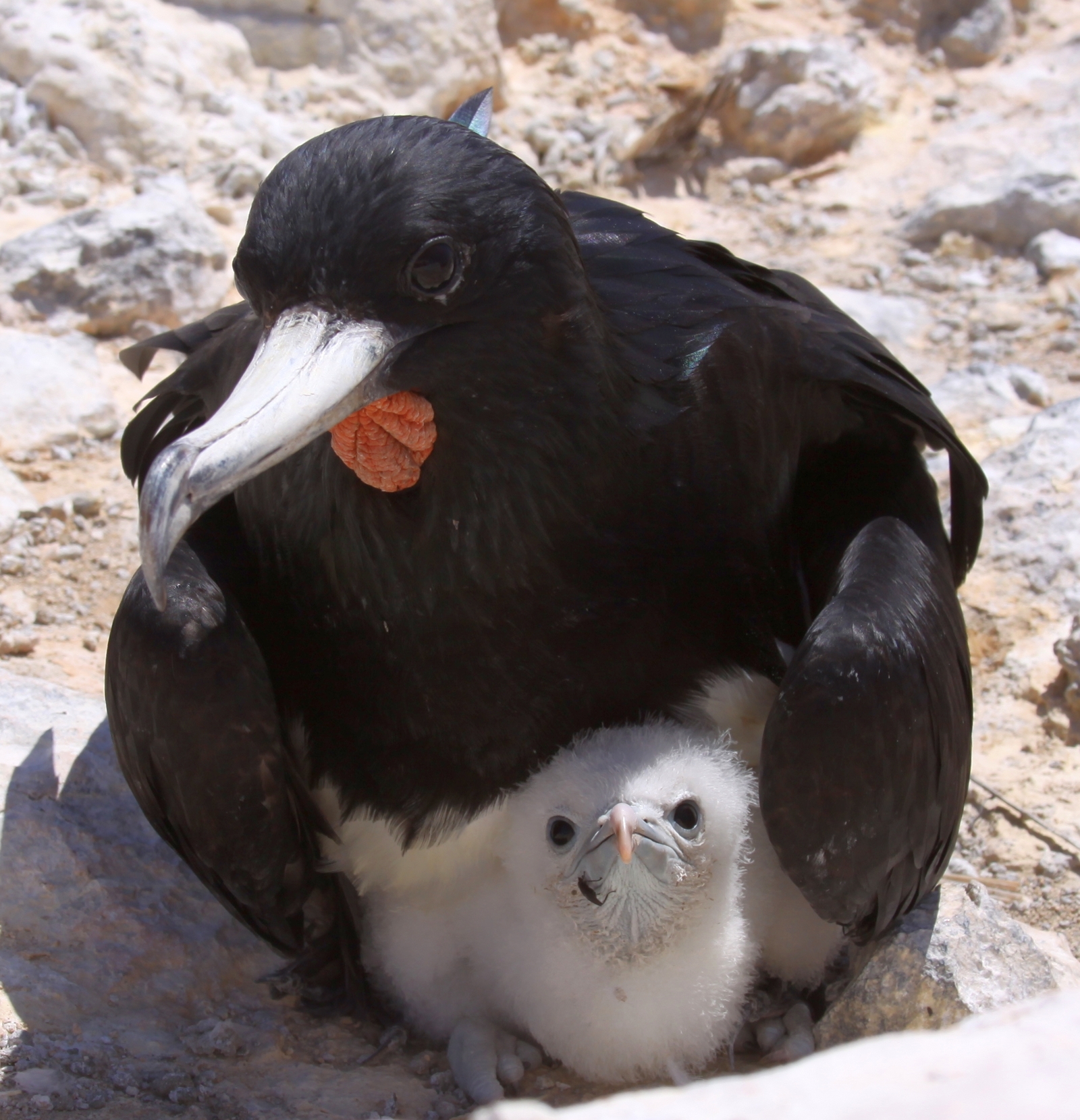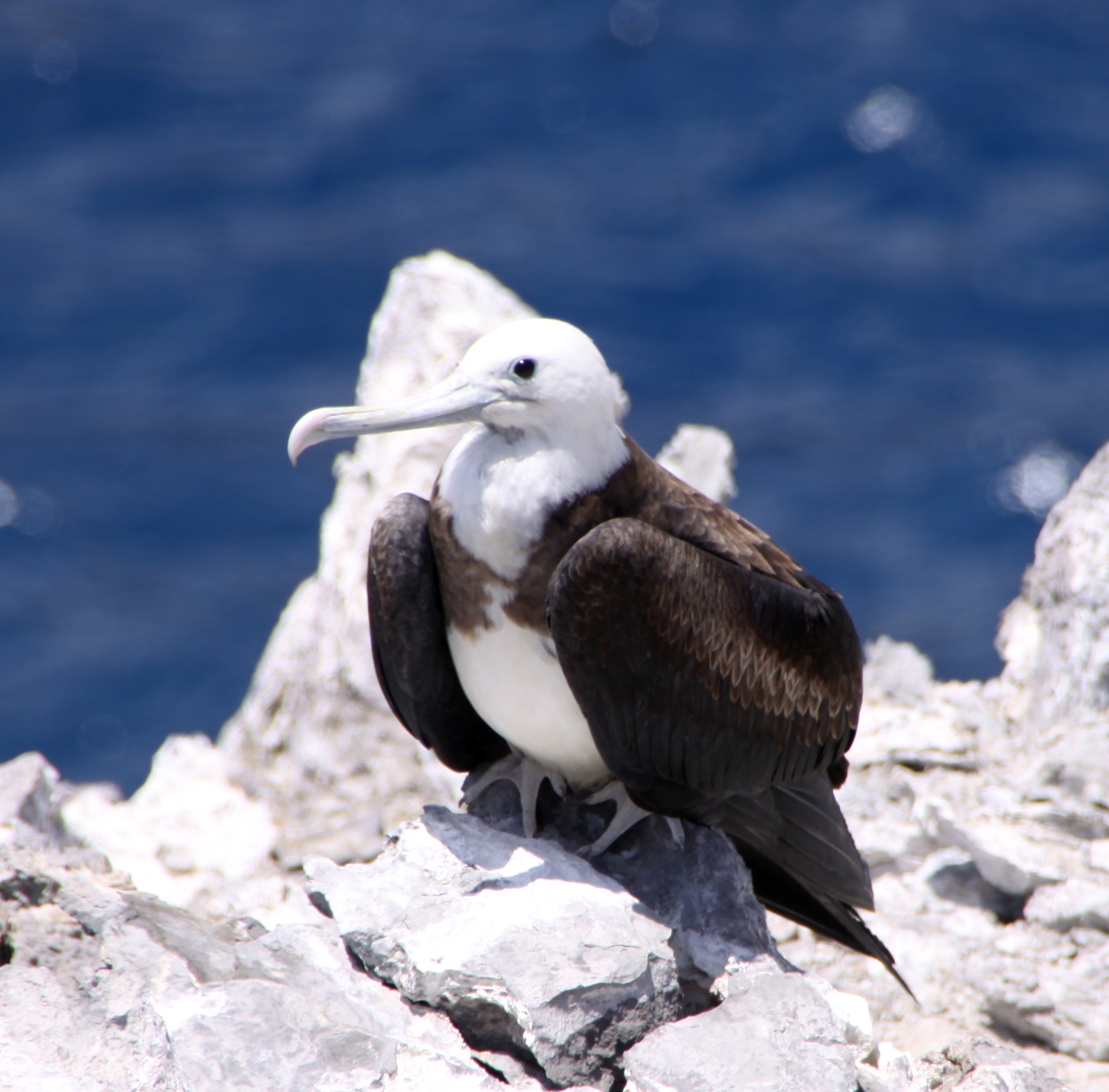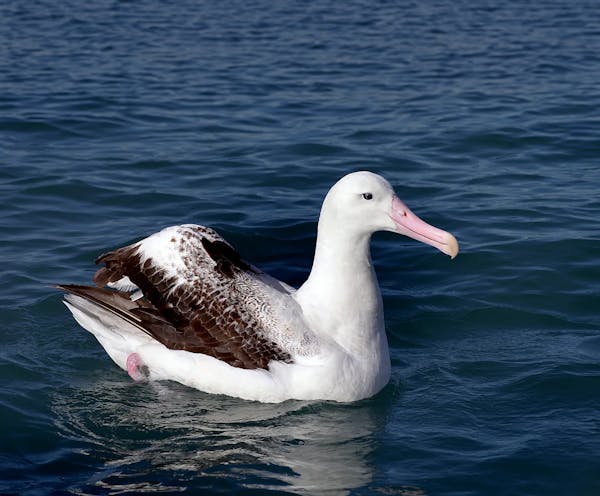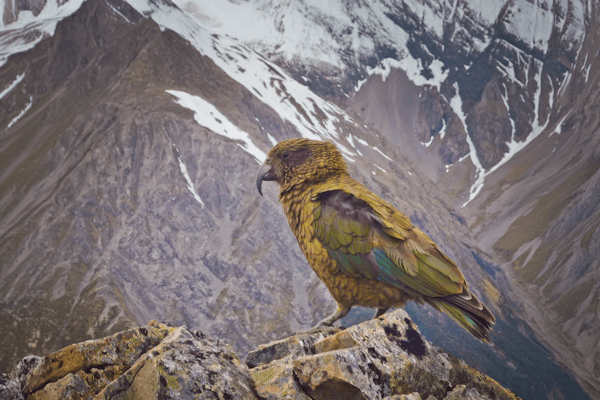Ascension frigatebird: The majestic seabird of Boatswain Bird Island
- Nature Conservation
- Land Conservation
- Iconic Species
- Wildlife
- Birds
- Afrotropics Realm
- Southern Afrotropics
One Earth’s “Species of the Week” series highlights an iconic species that represents the unique biogeography of each of the 185 bioregions of the Earth.
The Ascension frigatebird (Fregata aquila) is the sole frigate species that calls Boatswain Bird Island home, a steep-sided, flat-topped rock near Ascension Island. Ascension Island lies in splendid isolation between Brazil in South America and the Gulf of Guinea in the South Atlantic Ocean, providing a distinctive habitat for this remarkable seabird.

The Ascension frigatebird (Fregata aquila) is the iconic species of the St. Helena & Ascension bioregion (AT18), located in the Southern Afrotropics subrealm of the Afrotropics.
The graceful giant of the sky
Majestic in its form, the Ascension frigatebird shares common features with its frigate counterparts, displaying subtle variations in size between males and females. Adult dimensions range from 89 to 96 centimeters (35–38 in) in length, with females exhibiting larger sizes and longer bills. A wingspan stretching around 2 meters (6.6 ft) exemplifies its impressive aerial capabilities.
The adult male boasts a brownish-black plumage adorned with a sheen of purple and green. Its bill, pale grayish with some flesh and black tones, contrasts with dusky gray legs. Males also have a striking red gular sac, which they inflate to attract mates.
The female exhibits a similar color palette but with less green and purple gloss. Notably, it showcases a distinct dark brown to rust-brown collar, complemented by whitish to pale bluish gray bills and pinkish legs. Juveniles resemble adult females but feature an all-white head and upper neck.
Diverse marine foraging
Practicing surface-dipping as a foraging strategy, Ascension frigatebirds primarily catch fish, with a notable preference for flying-fish species like Cypselurus, Hirundichthyes, and Exocoetus volitans. Additionally, they capture baby green turtles (Chelonia mydas) and chicks of sooty terns (Onychoprion fuscatus). This dietary diversity underscores their adaptability to the rich marine resources surrounding Ascension Island.

Male Ascension frigatebird with chick at Boatswain Island. Image credit: Wiki Commons
A life anchored to Boatswain Bird Island
Characterized by a sedentary lifestyle, Ascension frigatebirds seldom venture beyond a 150 kilometer (93 mile) radius from their solitary breeding ground on Boatswain Bird Island. This unique ecological niche aligns with their specialized needs, highlighting their dependency on the local environment for sustenance and breeding activities.
Ascension frigatebirds exhibit a flexible breeding cycle, with the capacity to breed throughout the year, peaking between April and November or December. Nests are intricately woven among rocks and guano deposits, emphasizing their resourcefulness in utilizing available materials. The loose colonies shared with Pelecaniformes underline the coexistence of distinct avian species on the breeding grounds.

A female juvenile Ascension frigatebird. Image credit: Wiki Commons
Overcoming invasive species threats
Boatswain Bird Island, serving as a protected bird sanctuary, has undergone significant conservation efforts. Two centuries ago, the island faced challenges from rat and feral cat infestations. However, a noteworthy achievement occurred in 2006 when Ascension Island was declared cat-free. This milestone has substantially contributed to the Ascension frigatebird's breeding success, illustrating the positive impact of eradicating invasive species on local avian populations.
Safeguarding this unique species
The conservation status of the Ascension frigatebird is precarious due to its confined global breeding range. BirdLife International estimates a global population of 17,000–21,000 mature individuals based, translating to an overall population of 25,000–32,000 individuals.
Conservation efforts have focused on sustaining the bird sanctuary on Boatswain Bird Island and eliminating invasive species, showcasing the ongoing commitment to preserving this unique avian species and its delicate island habitat.
Support Nature Conservation




